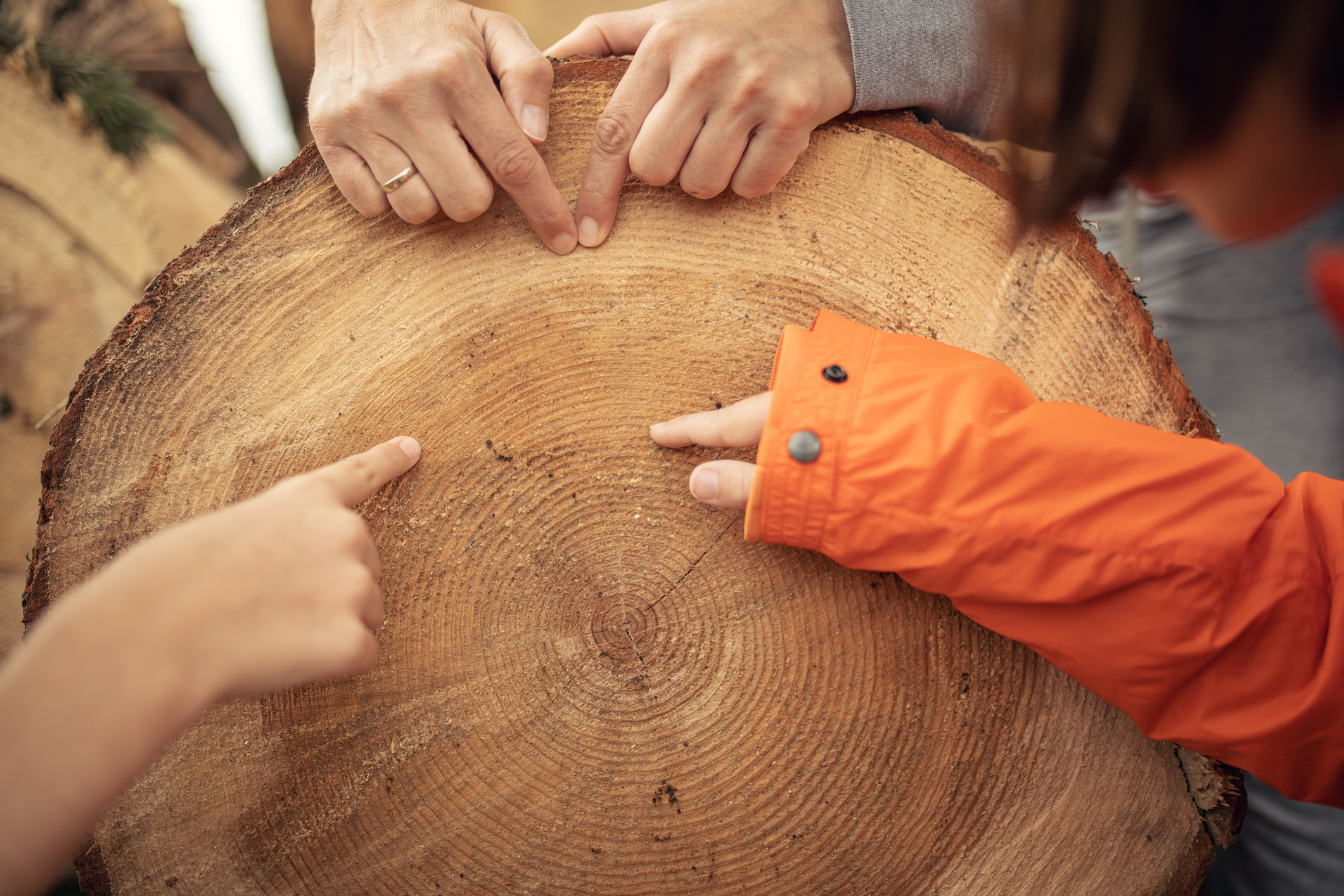Did you know tree rings hold a wealth of information about a tree’s health and history? Each ring represents a year of growth, and by studying these rings, we can gain insights into a tree’s life cycle, its responses to environmental changes and overall health. Let’s dive into the significance of tree rings, how they form and what they reveal about the life of a tree.
Formation of Tree Rings
Tree rings (or growth rings) are formed during the tree’s growth cycle. Each year, a tree produces new layers of wood in response to environmental conditions. This growth occurs in two main phases:
- Spring Growth: During spring, with abundant moisture and warmth, trees grow rapidly, producing a layer of lighter, wider cells. This phase is marked by the lighter-colored part of the ring.
- Summer and Fall Growth: As conditions become harsher in the summer and fall, growth slows down. Trees produce narrower, darker cells, creating the darker part of the ring.
The combination of these light and dark sections forms a distinct ring, allowing researchers to count rings and determine a tree’s age.
What Tree Rings Reveal About Tree Health
As trees grow, their trunks increase in length and thickness. Most trees only grow during part of the year (the growing season). This starting and stopping of the growth process produces visible bands or “rings” of wood around the trunk of the tree. Each ring corresponds to one year of growth. The oldest rings are near the center of the tree, while the youngest rings are at the outside of the trunk next to the bark. The ring just inside the bark is the current year’s growth.
- Wider Rings: A series of wide rings indicates that the tree enjoyed favorable conditions, such as ample water, nutrients and optimal temperatures. This is typically seen during years of good rainfall and mild weather.
- Narrower Rings: Narrower rings suggest periods of stress, which may be due to drought, disease, competition for resources or unfavorable weather conditions. Analyzing the pattern of narrow rings can help identify specific years of environmental stress.
There are two kinds of wood in each ring: “earlywood” appears light in color and its cells have thin walls; “latewood” appears dark in color and its cells have thick walls. The width of the rings changes according to the environmental conditions that existed during the growing season, so ring width can tell scientists a lot about how climate changed during the years when the tree was growing. If the rings are wide, then conditions were probably favorable for tree growth. Narrow rings, on the other hand, may indicate drought, disease or other conditions not favorable to growth.
Climate Change Indicators
Tree rings are vital for understanding historical climate patterns. Dendrochronology, which is the study of tree rings, has provided insights into climate change over centuries. Variations in ring width can correlate with historical climate data, revealing how trees have responded to changing conditions:
- Drought Patterns: By examining tree rings from different regions, researchers can trace the frequency and intensity of droughts over time. This data is crucial for understanding long-term climate trends and their impacts on forests.
- Temperature Fluctuations: Some studies have linked ring widths to temperature variations, allowing scientists to infer temperature changes across decades or centuries.
Resilience and Recovery
Tree rings also reflect a tree’s ability to recover from stress. Trees that experience significant environmental challenges may produce a few years of narrow rings, but if they begin to recover, subsequent rings will show increased growth. This recovery pattern is crucial for understanding a tree’s resilience and adaptability.
Practical Applications of Tree Ring Analysis
Urban Planning and Landscaping
In urban environments, understanding tree health through ring analysis can inform landscaping decisions:
- Selecting Resilient Species: Urban planners can use ring data to choose tree species that are more likely to thrive in specific environments, enhancing urban green spaces.
- Tree Health Monitoring: Regular analysis of tree rings in urban settings can help identify declining health, prompting timely intervention and care.
The Value of Tree Ring Analysis
Tree rings are invaluable indicators of a tree’s health, growth history and environmental conditions. By examining the width, color and density of these rings, we gain insights into not only the tree’s age but also the stresses it has endured and its overall vitality. From informing forestry practices to guiding urban landscaping decisions, the study of tree rings plays a crucial role in understanding and preserving our trees and forests.
When you trust Excel Tree Care with your tree care needs, you’re investing in the beauty and well-being of your property. Let us help you preserve the glory of your trees while contributing to a healthier environment. For tree care services (including 24-7 emergency assistance) in the North Atlanta Metro area, give us a call at (404) 964-6508 or get a free quote today.

